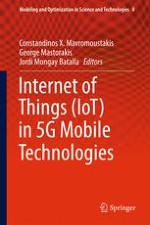This book reports on the latest advances in the modeling, analysis and efficient management of information in Internet of Things (IoT) applications in the context of 5G access technologies. It presents cutting-edge applications made possible by the implementation of femtocell networks and millimeter wave communications solutions, examining them from the perspective of the universally and constantly connected IoT. Moreover, it describes novel architectural approaches to the IoT and presents the new framework possibilities offered by 5G mobile networks, including middleware requirements, node-centrality and the location of extensive functionalities at the edge. By providing researchers and professionals with a timely snapshot of emerging mobile communication systems, and highlighting the main pitfalls and potential solutions, the book fills an important gap in the literature and will foster the further developments of 5G hosting IoT devices.
